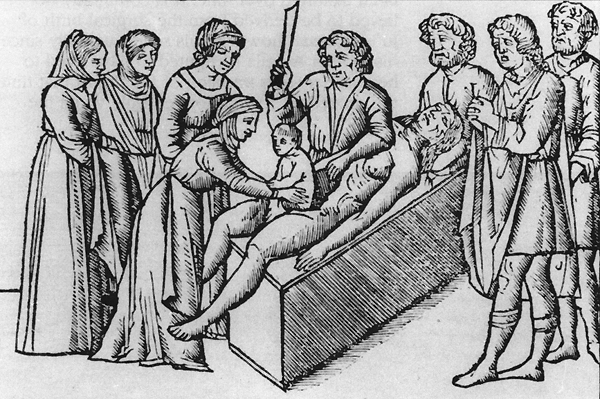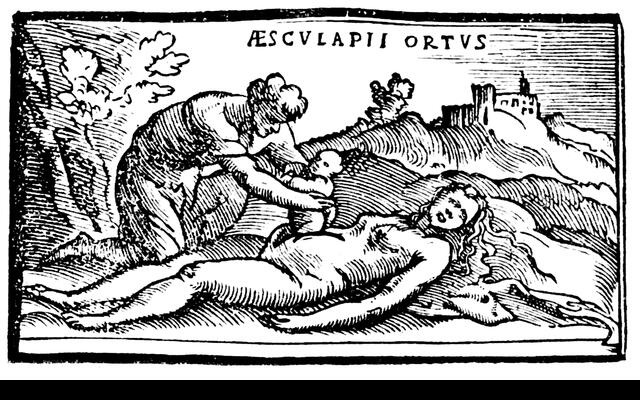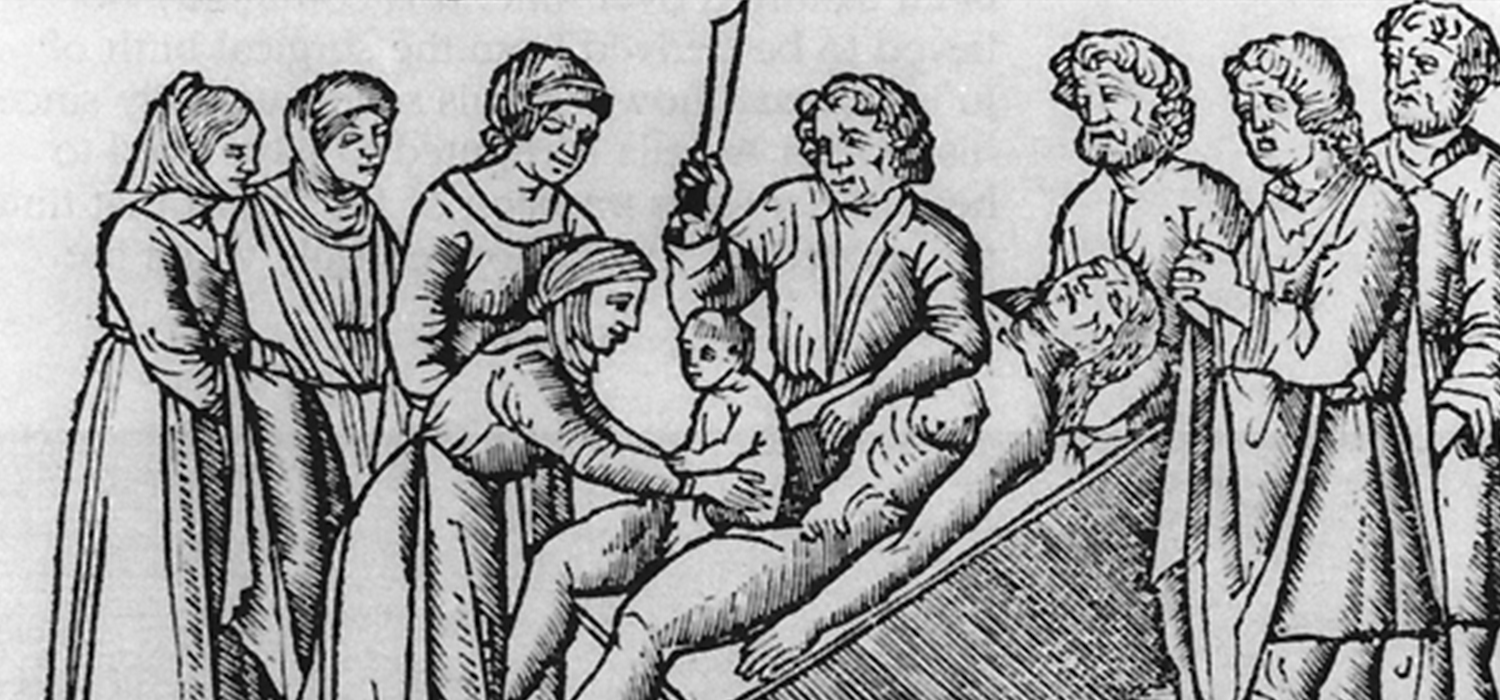Emergency Cesarean
Cesarean section (CS) is almost certainly one of the oldest operations in surgery with its origins lost in the mists of antiquity and mythology. Plentiful references to the cesarean section appear in olden Hindu, Egyptian, Grecian, Roman, and other European folklore. In Indian lore, King Bindusara - son of Chandragupt Maurya and father of Ashoka, is supposed to have been born by cesarean section.

The weak myth that Julius Caeser was born by this route is contradicted by the fact that his mother survived his birth by many years.
Founder of the famous cult of religious medicine- Asclepius was removed from his mother’s abdomen by Apollo.

The roots of the name caesarian are from the Latin word ‘Ab Utero caeso’ meaning to cut open the uterus. It is expected that the term comes from the Lex caesarea or royal law which stated that women who died before delivering their infant had to have the infant removed through the abdomen before burial. Though the evolution of C-sections has meant different things to different people at different times, the signs for it have changed intensely from ancient to modern times.
Did you Know???
The first written record of a mother and baby surviving a cesarean section comes from Switzerland in 1500
Alcohol in the mother’s blood passes to the baby through the umbilical cord. The teratogenic effect of fetal alcohol exposure leads to potential problems instantly after birth, during infancy, or even later, besides mental impairment in life. Studies conducted by various medical researchers have revealed that there is an increasing risk of adverse birth outcomes, preterm delivery, and low birth weight, with increasing levels of liquor intake.
A planned vaginal birth may not always go as expected and in such a situation an emergency cesarean may need to be considered. An emergency C-section is recommended if:
- • There are concerns for the safety of the mother and the infant
- • There is a life-threatening emergency for either or both the mother and baby
- • The labor is not progressing normally
- • Additional complications like excessive bleeding and pre-eclampsia
Indications for cesarean delivery
Maternal
- • Prior cesarean delivery
- • Abnormal placentation
- • Maternal request
- • Prior classical hysterotomy
- • Unknown uterine scar type
- • Uterine incision dehiscence
- • Prior full-thickness myomectomy
- • Genital tract obstructive mass
- • Invasive cervical cancer
- • Prior trachelectomy
- • Permanent cerclage
- • Prior pelvic reconstructive surgery
- • Pelvic deformity
- • Herpes simplex virus (HSV) Human immunodeficiency virus (HIV) infection
- • Cardiac or pulmonary disease
- • Cerebral aneurysm or arteriovenous malformation
- • Pathology requiring concurrent intra-abdominal surgery
- • Perimortem cesarean delivery
Maternal Fetal
- • Cephalopelvic disproportion
- • Failed operative vaginal delivery
- • Placenta previa or placental abruption
Fetal
- • Nonreassuring fetal status
- • Malpresentation
- • Macrosomia
- • Congenital anomaly
- • Abnormal umbilical cord Doppler study
- • Thrombocytopenia
- • Prior neonatal birth trauma
Do you need consent for Cesarean Section?
Yes, Consent should be taken in the language understood by the patient and never implied or forced. The expectant mother should be explained that through techniques of anesthesia and surgery, complications like hemorrhage, infection, soft-tissue injuries, and injury to the baby and implications for future pregnancies. In rare cases where the patient is unable to sign, a thumb impression is taken and consent is obtained from the relatives. The patient has every right to refuse a c-section being oblivious to the benefits to her and her baby’s health. Despite counselling, if there is a refusal the same must be documented on paper.
Technique
Step 1: Anesthesia
- • Spinal
- • Epidural
- • General
- • Local anesthesia
Step 2: Skin Incision or Uterine Incision
Skin Incision is further divided in 3 segments:
- • Pfannenstiel Incision
- • Maylard Incision
- • Vertical Incision
Uterine Incision is divided in 4 segments:
- • Lower Segment Transverse Incision
- • Lower Segment Vertical Incision
- • Classical Incision
- • T-Shaped Incision
Step 3: Delivery of Baby
Step 4: Closure
| Complications of Cesarean Delivery | |
|---|---|
| Anesthesia related | Surgical complications |
|
|
|
|
After every cesarean delivery, a detailed note should be recorded. This should include a summary of events in labor, the indication, and surgical details of the operation. Emergency cesarean is an important topic in obstetric emergencies and requires attention to great detail. A fellowship in reproductive medicine and a diploma in assisted reproductive technology with Medline Academics are beneficial for medics preparing for obstetric emergencies.
